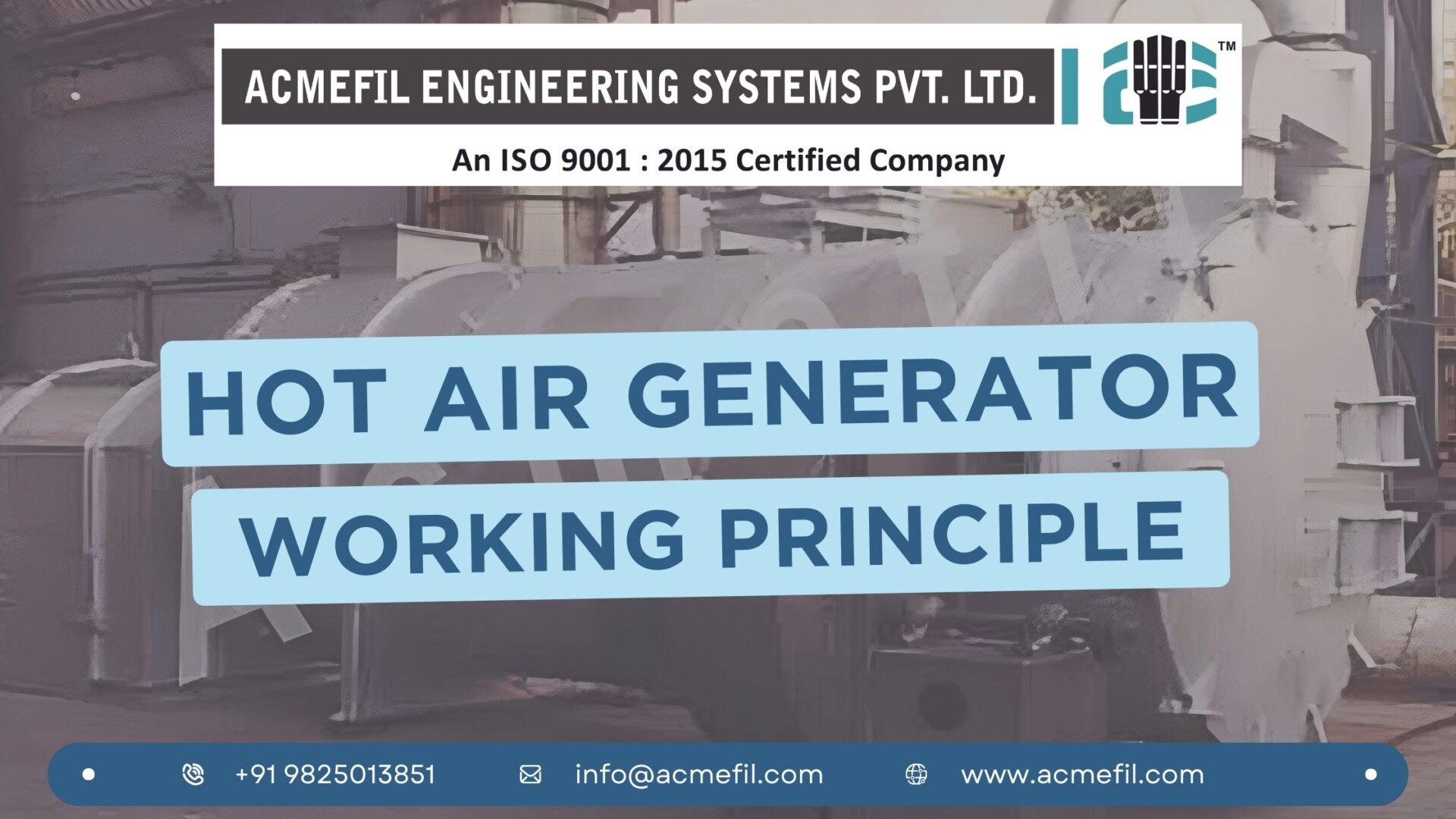Hot air generators play a crucial role in various industrial processes, providing a reliable source of hot air for drying, heating, and other applications. Understanding the working principle of a hot air generator can help you appreciate its efficiency and versatility. This post will explain how hot air generators work and highlight their applications in different industries.
What is a Hot Air Generator?
A hot air generator is an industrial device designed to produce hot air for various applications. It typically uses fuel combustion, electric heating, or other energy sources to heat the air. Industries such as food processing, pharmaceuticals, chemicals, and textiles rely on hot air generators for efficient heating solutions.
The Hot Air Generator Working Principle
To understand the hot air generator working principle, let’s break down the process into essential steps:
- Fuel Combustion or Electric Heating: The process begins with the energy source. In fuel-based hot air generators, a burner combusts fuel (such as natural gas, diesel, or biomass) to produce heat. In electric hot air generators, electrical energy converts directly into heat using heating elements.
- Heat Exchanger: The heat generated transfers to the air through a heat exchanger. In fuel-based systems, the combustion chamber heats the exchanger, while in electric systems, the heating elements transfer heat directly to the air.
- Air Intake and Blower: The system draws in ambient air through an air intake. A blower or fan forces the air through the heat exchanger, where it absorbs the generated heat.
- Heating Process: As the air passes through the heat exchanger, it absorbs the heat, raising its temperature to the desired level. The efficient transfer of heat ensures that the air reaches the required temperature quickly and consistently.
- Hot Air Distribution: The system then directs the heated air through ducts or outlets to the desired location. This hot air can be used for drying, heating, or other industrial processes.
- Temperature Control: A control system monitors and regulates the temperature of the hot air to ensure it remains within the desired range. This system may include thermostats, sensors, and control panels to adjust the fuel supply or electrical power as needed.
Advantages of Hot Air Generators
Understanding the hot air generator working principle reveals several significant advantages:
- Efficiency: Hot air generators provide quick and efficient heating, making them ideal for various industrial applications.
- Versatility: These generators can use different energy sources, including natural gas, diesel, biomass, and electricity, providing flexibility in operation.
- Consistency: The controlled heating process ensures a consistent supply of hot air at the desired temperature.
- Compact Design: Hot air generators are often compact and easy to install, making them suitable for integration into existing systems.
Applications of Hot Air Generators
Hot air generators serve a wide range of industries due to their efficiency and versatility:
- Food Processing: They provide hot air for drying food products, sterilizing equipment, and baking.
- Pharmaceuticals: Hot air generators dry powders, granules, and other pharmaceutical products.
- Chemicals: These generators supply hot air for drying chemical compounds and processing materials.
- Textiles: Hot air generators assist in drying and heating processes in textile manufacturing.
- Automotive: They are used in paint drying and other heating applications in the automotive industry.
In conclusion, understanding the hot air generator working principle highlights its importance in providing efficient and consistent heating solutions across various industries. By leveraging the advantages of hot air generators, businesses can improve their processes, enhance product quality, and achieve greater operational efficiency.


